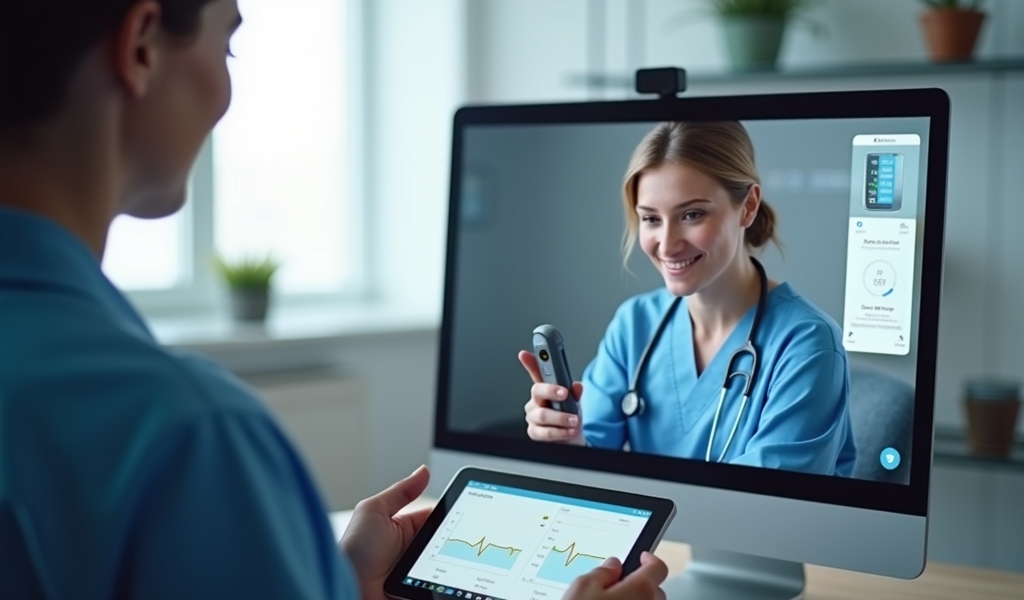Overview
Online COVID screening has emerged as an essential digital tool for contactless evaluation of COVID-19 symptoms and exposure risks, enabling individuals, healthcare providers, and organizations to maintain safety while continuing necessary services. Effective implementation of these screening processes—from choosing the right platform to maintaining privacy protocols—is crucial for public health management as we navigate ongoing pandemic challenges.
Table of Contents
- Understanding Online COVID Screening: What It Is and Why It Matters
- Benefits of Digital Screening for COVID-19
- Step 1: Choosing the Right Screening Platform or Tool
- Step 2: Essential Questions to Include in Your Screening
- Step 3: Implementing the Screening System Effectively
- Step 4: Managing Screening Results and Next Steps
- Step 5: Maintaining Privacy and Data Security
- Integration with Broader Telehealth Services
- Conclusion
- Frequently Asked Questions
In the face of the ongoing global health challenge, online COVID screening has become an essential tool for individuals, healthcare providers, and organizations seeking to maintain safety while providing necessary services. This digital approach to preliminary health assessment allows for efficient, contactless evaluation of COVID-19 symptoms and exposure risks. As we continue to navigate pandemic protocols, understanding how to effectively implement and utilize online COVID screening processes is crucial for public health management and personal safety.
Understanding Online COVID Screening: What It Is and Why It Matters
Online COVID screening refers to digital tools and platforms designed to assess individuals for COVID-19 risk factors, symptoms, and potential exposure before they enter facilities or receive in-person services. These screenings typically consist of questionnaires that help identify those who might need testing, medical attention, or isolation measures.
The primary purpose of online COVID screening is to create safer environments by identifying potential COVID-19 cases before they can spread the virus to others. Initially implemented as emergency measures, these screening protocols have evolved into sophisticated systems that integrate with broader healthcare infrastructures.
According to the Centers for Disease Control and Prevention, regular screening plays a vital role in preventing community transmission. This is particularly important for healthcare settings, schools, workplaces, and public gatherings where people may be in close proximity.
Benefits of Digital Screening for COVID-19
The shift to online COVID screening offers numerous advantages over traditional in-person assessment methods. First and foremost, it significantly reduces physical contact, minimizing potential exposure for both screeners and those being screened. This contactless approach has been crucial in maintaining essential services while protecting public health.
Additionally, digital screening provides remarkable efficiency improvements. Organizations can process large numbers of individuals quickly, reducing bottlenecks and wait times that might otherwise occur with manual screening processes. This streamlining is particularly valuable for high-traffic locations like hospitals, airports, and large workplaces.
Data collection and analysis represent another major benefit. Digital screening platforms can securely aggregate information, allowing for better tracking of trends, potential outbreaks, and the effectiveness of prevention measures. Many organizations have reported cost savings after implementing these systems due to reduced staffing needs and improved operational efficiency.
Perhaps most importantly, online COVID screening has helped normalize health checks as part of everyday activities. This cultural shift toward proactive health monitoring may have lasting benefits beyond the current pandemic, potentially improving responses to future public health challenges.

Step 1: Choosing the Right Screening Platform or Tool
Selecting an appropriate online COVID screening solution is the foundation of an effective program. The market now offers various options, from simple survey tools to comprehensive health management platforms. When evaluating potential solutions, consider these key factors:
User experience should be a primary consideration. The platform must be intuitive and accessible for all users, regardless of technical ability or language preference. Solutions with multilingual support and accessibility features will ensure wider adoption and compliance.
Integration capabilities are equally important. The ideal screening tool should connect seamlessly with other systems, such as appointment scheduling, building access controls, or telehealth doctor visit platforms. This integration creates a smoother workflow and reduces administrative burden.
Leading options in the market include:
- Dedicated COVID screening apps from healthcare providers
- Workplace health management platforms with COVID modules
- Custom solutions developed for specific organizational needs
- Government-sponsored screening tools in many regions
When making your selection, also consider scalability and customization options. Your needs may evolve as public health guidelines change, so choosing a flexible solution is advisable. Many organizations find that solutions offering customizable questionnaires and reporting features provide the greatest long-term value.
Step 2: Essential Questions to Include in Your Screening
Effective online COVID screening depends on asking the right questions. While specific requirements may vary based on current public health guidance, most comprehensive screenings include these essential elements:
Symptom assessment forms the core of most screenings. Questions typically cover the presence of key COVID-19 symptoms such as fever, cough, shortness of breath, fatigue, body aches, loss of taste or smell, sore throat, congestion, nausea, or diarrhea. The questionnaire should clearly specify a timeframe (usually 24-48 hours) for reporting these symptoms.
Exposure risk assessment is equally important. This includes questions about close contact with confirmed COVID-19 cases, participation in high-risk activities, or travel to areas with high transmission rates. According to World Health Organization guidelines, understanding exposure context is crucial for risk evaluation.
Vaccination status has become a standard component of many screenings, though approaches vary widely depending on local regulations and organizational policies. Questions may address whether individuals have received primary vaccination series and any recommended boosters.
For maximum effectiveness, questions should be:
- Clear and unambiguous
- Updated regularly to reflect current variants and symptoms
- Aligned with the latest public health guidance
- Designed to encourage honest reporting
Many organizations also include educational elements within their screening tools, providing information about current protocols, testing locations, or vaccine availability. This integrated approach helps improve overall health literacy among users.
Step 3: Implementing the Screening System Effectively
Successful implementation of an online COVID screening system requires careful planning and communication. The process begins with establishing clear protocols for when and how screening will be conducted. Most organizations require screening prior to facility entry or service receipt, but frequency requirements vary based on risk levels and activities.
Communication is crucial for compliance. All stakeholders should understand why screening is necessary, how to complete it correctly, and what happens with the information collected. Consider creating simple instructional materials using multiple formats (video, text, infographics) to accommodate different learning preferences.
For optimal adoption, make the screening process as convenient as possible. This might include:
- Providing QR codes at entry points for quick access
- Sending automated reminders before expected arrival times
- Offering assistance for those with technical difficulties
- Ensuring the process works efficiently on mobile devices
Establishing clear consequences for screening results is equally important. Define exactly what happens when someone screens positive, including alternative arrangements like rescheduling or switching to virtual doctor visits. Having these pathways clearly defined prevents confusion and improves compliance.
For organizations implementing screening at scale, consider a phased approach. Begin with a pilot group to identify and address any issues before full deployment. This gradual implementation allows for adjustments and builds confidence in the system among all users.
Step 4: Managing Screening Results and Next Steps
How organizations handle screening results can significantly impact the effectiveness of their COVID prevention efforts. When developing your results management protocol, establish clear decision pathways for both negative and positive screening outcomes.
For negative screenings (no symptoms or exposure risks identified), the process should be streamlined. Many systems now generate QR codes or digital passes that can be quickly verified for facility access or service provision. These confirmations should include timestamps and clear expiration parameters.
Positive screenings require more careful handling. Your system should immediately provide instructions for the individual, which may include:
- Guidance to avoid entering facilities or attending in-person activities
- Information about testing options and locations
- Instructions for self-isolation or quarantine
- Options for Teladoc consultations or other remote healthcare services
Designated staff should receive alerts about positive screenings to facilitate follow-up. This might include HR personnel for employee screenings, school nurses for educational settings, or clinic staff for healthcare facilities. These team members should be thoroughly trained on appropriate next steps and privacy requirements.
Data tracking provides valuable insights for organizational planning. Aggregate screening results (with personal identifiers removed) can help identify trends, potential exposure clusters, or the need for enhanced preventive measures. Regular review of this data supports informed decision-making about facility operations and safety protocols.

Step 5: Maintaining Privacy and Data Security
Privacy considerations are paramount when implementing online COVID screening. These systems collect sensitive health information that requires proper protection under various regulations, including HIPAA in healthcare settings and comparable privacy laws in other contexts.
Begin by limiting data collection to only what’s necessary for effective screening. Avoid gathering extraneous information that doesn’t directly serve screening purposes. This minimalist approach reduces privacy risks and often increases user comfort with the process.
Transparency about data practices builds trust. Clearly communicate:
- Exactly what information is being collected
- How long it will be retained
- Who has access to the data
- How it will be protected
- When and how it will be deleted
Technical safeguards are essential components of a secure screening system. Ensure your chosen platform employs industry-standard encryption for data transmission and storage. Access controls should restrict information to only those staff members who genuinely need it for their roles.
Establish a data retention policy that balances public health needs with privacy concerns. While some information may need to be kept for contact tracing or documentation purposes, set clear timelines for secure deletion once that need has passed. Many experts recommend reviewing this policy regularly as public health guidance evolves.
For organizations subject to specific regulations like HIPAA, healthcare privacy requirements must be fully incorporated into screening protocols. This may include additional documentation, staff training, and security measures beyond general best practices.
Integration with Broader Telehealth Services
Online COVID screening reaches its full potential when integrated with comprehensive telehealth services. This connection creates a seamless pathway from initial screening to appropriate care for those who need it, minimizing gaps that might otherwise lead to delayed treatment or increased community spread.
Many healthcare systems now link their screening tools directly to appointment scheduling. When a screening indicates potential COVID-19, users can immediately book testing appointments or telehealth consultations without navigating multiple systems. This frictionless experience increases the likelihood that individuals will follow through with recommended next steps.
For ongoing monitoring, some screening platforms connect with remote patient monitoring tools. This integration allows healthcare providers to track symptom progression for those who screen positive but don’t require immediate hospitalization. Regular check-ins through connected systems help identify deteriorating conditions quickly.
Beyond acute care, integrated screening and telehealth systems support public health data collection. With appropriate privacy protections, these connected platforms can provide valuable information about community transmission patterns, symptom prevalence, and the effectiveness of interventions. This data-driven approach strengthens overall pandemic response strategies.
As we move forward, experts anticipate that online COVID screening will become increasingly integrated with broader digital health infrastructure. This evolution will likely include connections to vaccination records, test results, and electronic health records—creating a more comprehensive picture of individual and community health status.
Conclusion
Online COVID screening has evolved from an emergency response measure to an essential component of our public health infrastructure. By following the five essential steps outlined in this guide—choosing the right platform, asking appropriate questions, implementing effectively, managing results properly, and maintaining privacy—organizations can create screening systems that protect health while respecting individual dignity.
As we continue to navigate pandemic challenges, these digital tools provide a vital layer of protection for communities. They allow for early identification of potential cases, support data-informed decision making, and create pathways to appropriate care. When thoughtfully implemented, online COVID screening helps maintain essential activities while minimizing transmission risks.
Looking ahead, the lessons learned from implementing these screening systems may influence how we approach other public health challenges. The integration of digital screening with broader telehealth services represents a significant advancement in healthcare delivery—one that may persist long after the current pandemic subsides.
By embracing these technologies responsibly, with attention to both effectiveness and ethics, we can build more resilient health systems for the future. Online COVID screening exemplifies how digital innovation can serve public health needs while adapting to evolving circumstances. This adaptability will remain crucial as we continue to face health challenges in our increasingly connected world.
Frequently Asked Questions
How accurate are online COVID screening tools?
Online COVID screening tools are designed as preliminary assessments, not diagnostic tests. Their accuracy depends largely on honest self-reporting and the current understanding of symptoms associated with prevalent variants. Research from the National Institutes of Health suggests that well-designed screenings can identify approximately 70-85% of potentially infectious cases when symptoms are present. However, they cannot detect asymptomatic cases unless exposure questions are answered accurately. For optimal safety, screening should be used as one component of a comprehensive approach that may also include testing and vaccination.
How often should online COVID screening be completed?
Frequency requirements vary based on setting, local transmission rates, and organizational policies. Healthcare facilities often require daily screening for staff and patients, while offices might implement screening before each shift or building entry. Educational institutions typically require daily screening during periods of high transmission. The CDC recommends that screening frequency should increase during local outbreaks or when community transmission levels rise. For personal use, consider completing a screening before attending gatherings, particularly those involving vulnerable individuals.
What should I do if I screen positive on an online COVID assessment?
If you screen positive, take the following steps: First, avoid contact with others and do not enter shared spaces. Second, consider taking a COVID test (rapid antigen or PCR) to confirm your status. Third, contact your healthcare provider for guidance, preferably through telehealth to prevent potential exposure. Fourth, follow isolation guidelines as recommended by your local health authority, typically 5-10 days depending on symptoms and test results. Finally, notify close contacts of your potential exposure so they can take appropriate precautions.
Are online COVID screenings legally required?
Legal requirements for COVID screening vary significantly by location, industry, and current public health directives. In healthcare settings, many jurisdictions continue to mandate screening for staff and patients. Educational institutions, transportation sectors, and certain employers may have ongoing requirements based on local regulations or organizational policies. Even where not legally required, many organizations implement screening as part of their duty of care obligations. Check with local health authorities and sector-specific guidance for the most current requirements in your area.
How can I ensure the privacy of my health information in online COVID screening?
To protect your privacy when using online COVID screening tools, start by verifying the screening is from a legitimate organization with clear privacy policies. Use only official links rather than forwarded messages or unverified QR codes. Be cautious about screenings that request unnecessary personal information beyond what’s needed for COVID assessment. Consider using screening tools that offer anonymous options when appropriate. If concerned about a particular screening requirement, ask the organization directly about their data retention policies and security measures. For workplace screenings, you generally have the right to know how your health information will be stored and used.

